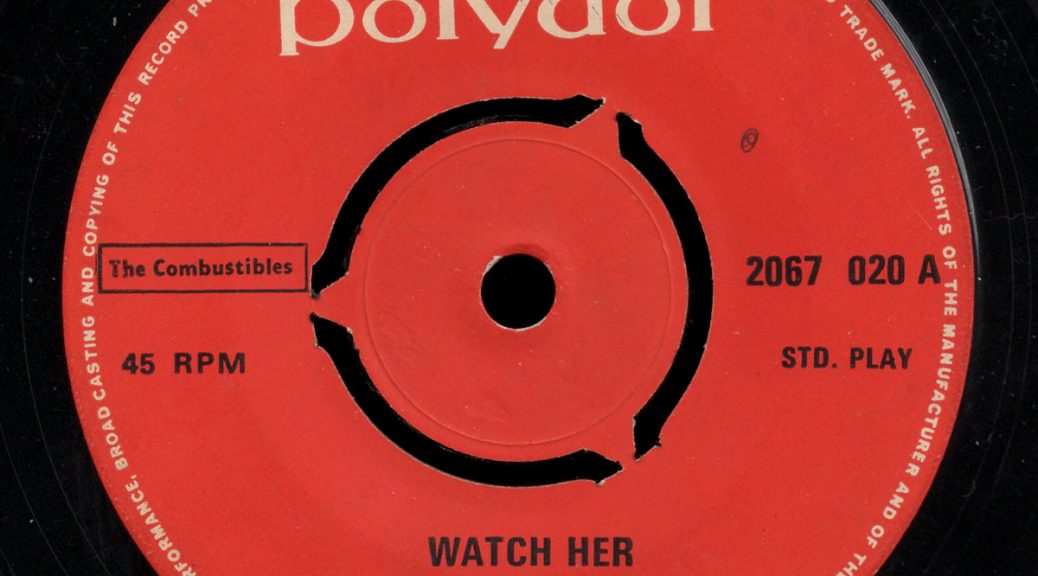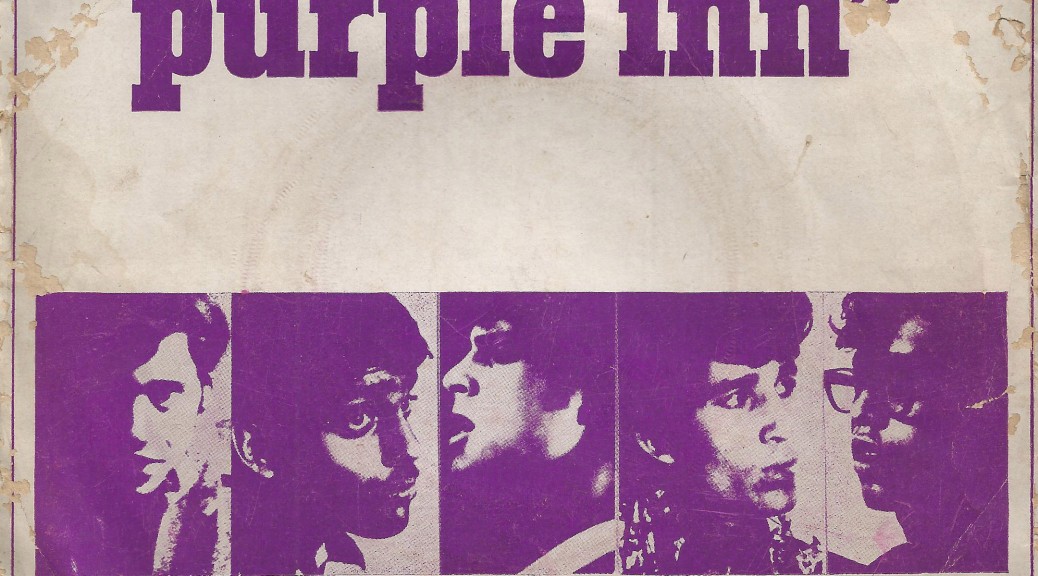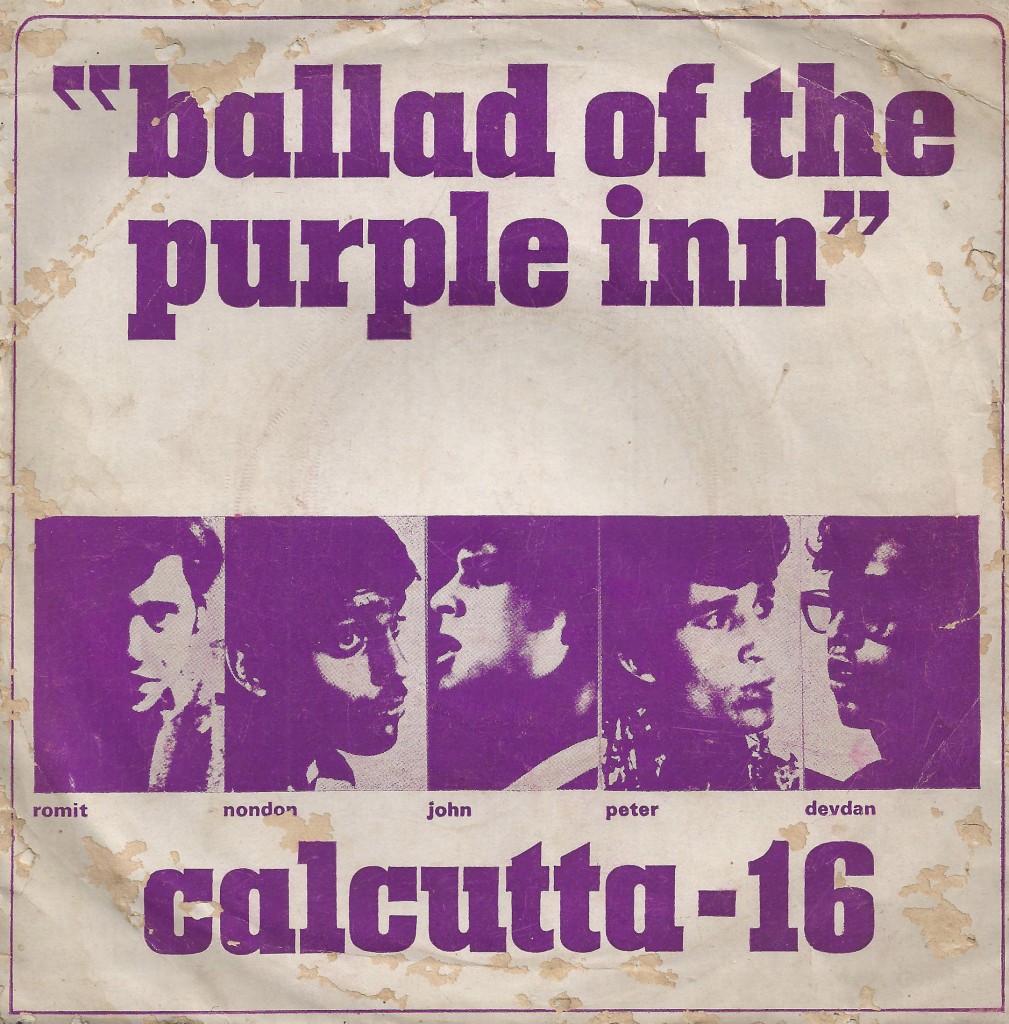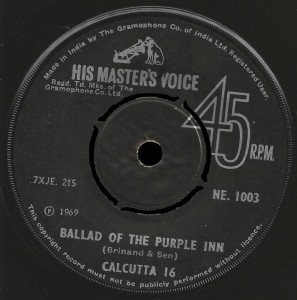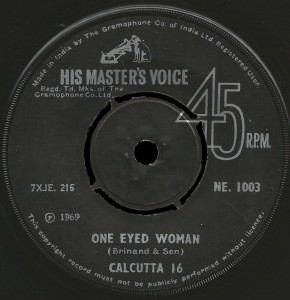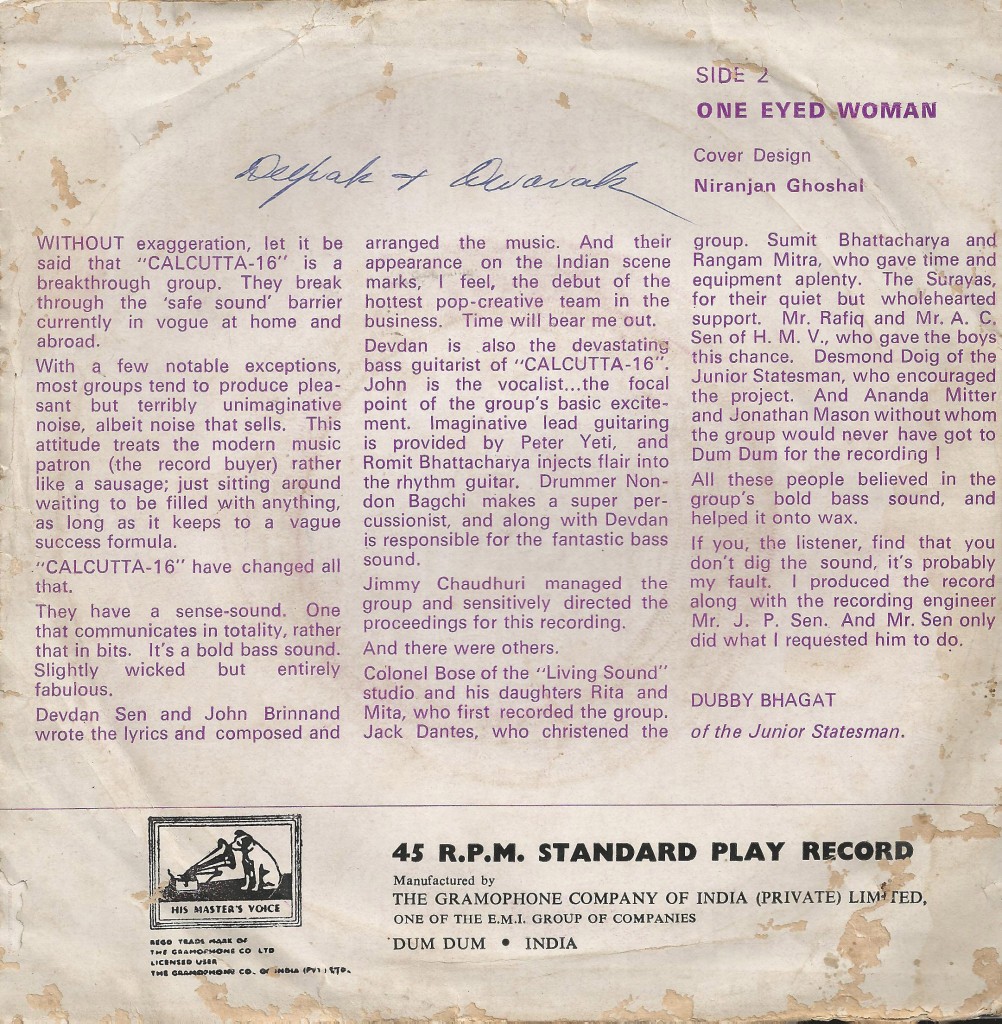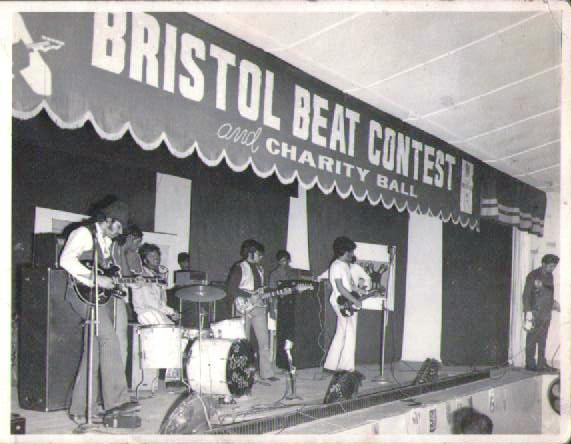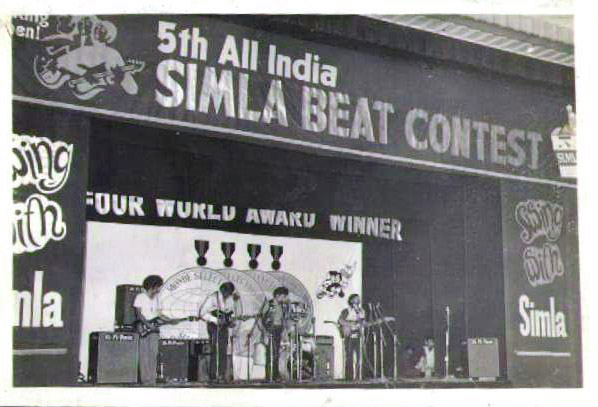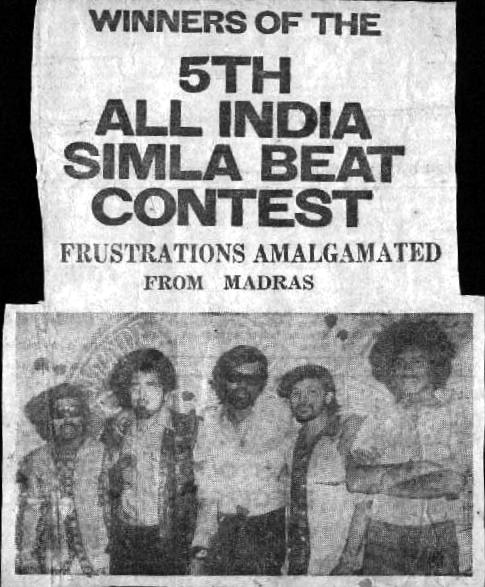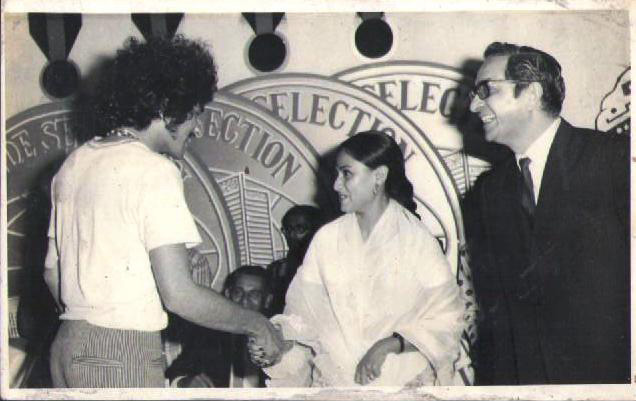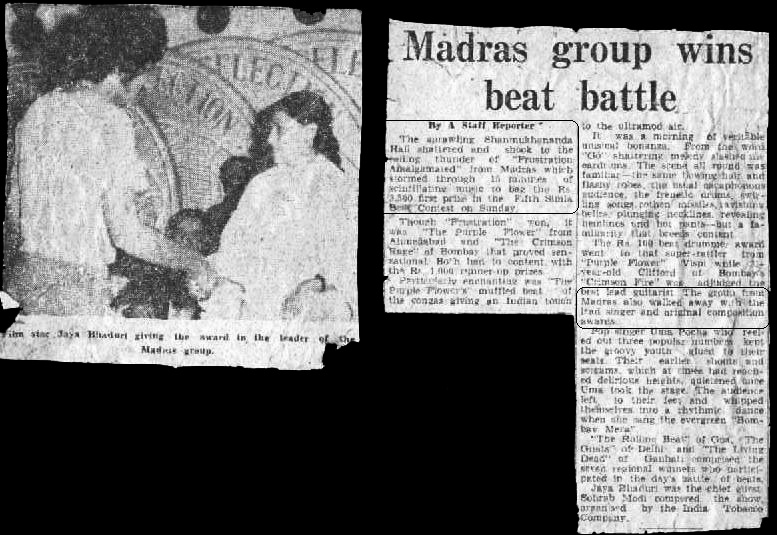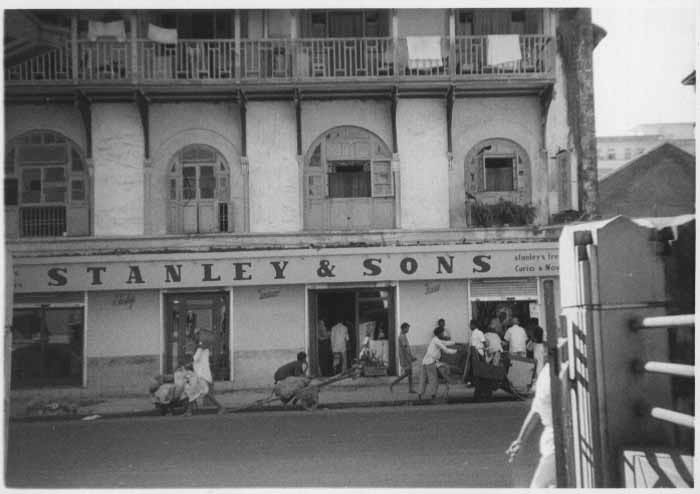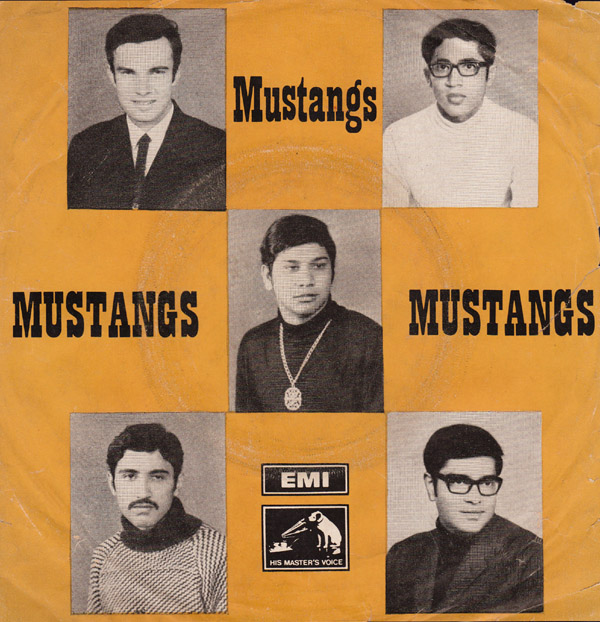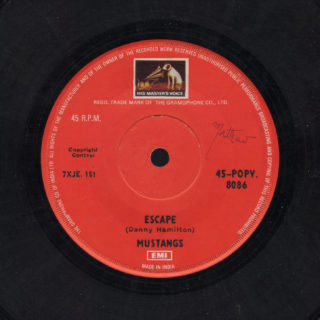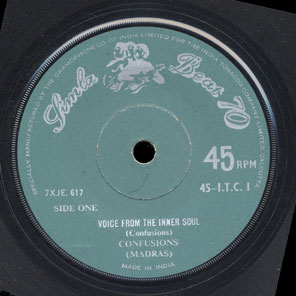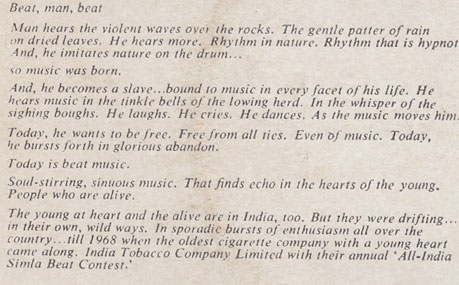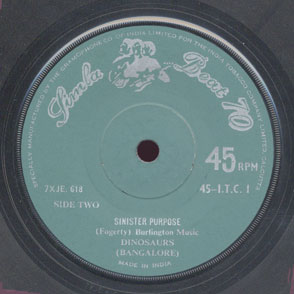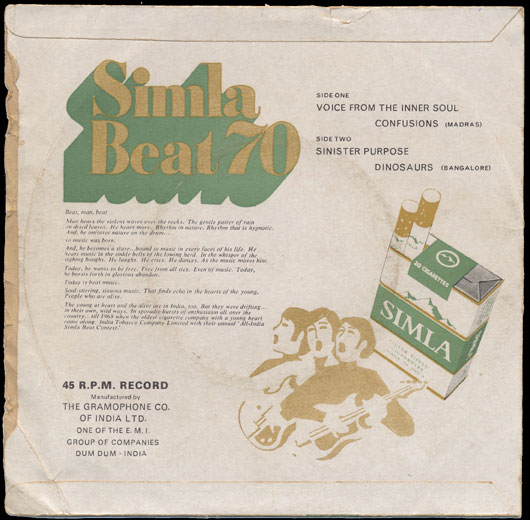Although my awareness of western pop music started with the receipt in the mail of a 45 rpm record of Elvis’s “Jailhouse Rock” in December 1957, the era of the Beat Groups in India did not start until the arrival of the British groups on the pop charts like the Beatles, the Rolling Stones, the Animals, Gerry & the Pacemakers, the Who, etc.
The first Beatle’s single “Love Me Do” hit the charts in late 1962, and nothing was the same anymore. 45 rpm discs of the song were released in India on the Parlophone label and sold like hot cakes. Soon hits by other groups from the same genre followed such as “My Generation” by The Who, and “Route 66” by The Rolling Stones. Soon my friends at school were having their hair styled like the Beatles!
The Indian government had imposed a strict non-import policy and it was very very difficult to purchase electric guitars, amplifiers, or any other items needed to start a rock group. Beatlemania was considered “foreign” affliction of an imperialistic power that should be shunned. Nevertheless, I ordered an electric guitar to be handmade by a shop at Gol Mandir Dhobi Talao. The Catholic guitar-maker and violin repairer was always boozed up and took weeks and weeks to make the guitar. Finally, one day when it was ready to be picked up my friend and I picked it up on his father’s BSA motorcycle. All the way from Dhobi Talao to Dadar-Matunga where we stayed people were pointing at us since we had the guitar in hand and looked like the Beatles. The scene in Bombay was ready to explode.
Soon there were rock groups, such as The Trojans, The Brief Encounter, The Jets, The Savages, etc., were mushrooming everywhere. The Jets were playing in 1963 at the Greens Hotel next to the old Taj Mahal Hotel. The Greens was pulled down a few years later and in it place stand the new Taj. Beat concerts were organized on regular basis at the newly-opened Shanmukhnanda Hall at King’s Circle in Matunga since it had a very large capacity and had the best acoustics for that time. Groups like The Trojans, The Savages, and others played covers of the Beatles, The Rolling Stones and The Fortunes. They all used locally-made instruments and fabricated amps and speaker modules that just did not sound right and did no justice to the Indian talent.
It was around 1965 that time that we began to think about a name for our group and were leaning towards “The Gnats”. The name was derived from a jet fighter of the same name that served the Indian Air Force well in the India-Pakistan war of 1965 and in addition we were remaining true to color by naming our band after an insect as The Beatles had done! The Gnats were constituted one fine day on the entrance steps on Captain House on Vincent Road in the Dadar-Matunga area of Bombay comprising of Adil Battiwala on drums and keyboard, myself Ardeshir Damania on lead guitar, Keki Patel bass guitar, and Walter Noronha on rhythm guitar. I had got rid of my black and white badly-made guitar and purchased a new one from a shop, Sardarflute, opposite the Chitra Cinema at Dadar. The Sikh instrument maker at least had some knowledge about electric guitar-making and had supplied Hawaiian guitars to such Indian maestroes such as Van Shipley, Hazara Singh and his son Charanjit Singh. Adil Battiwalla used to borrow the Premier drum set from Earuch Sethna, who used to play the drums in his mother’s professional Nelly & Her Band. Keki Patel had a locally made bass guitar which was passable, and Walter Noronha played rhythm guitar with an electronic pick-up fitted over an normal acoustic 6-string guitar. We used the call Walter “Mr Confidence”. This was because whenever we faltered while playing on stage for one reason or the other, Walter would at once cover up the mistakes with his excellent and flawless guitar work.
There was an electronics expert at Kabutarkhana close to BB Dadar Station called Edwin D’souza. Edwin used to make amplifiers using original Mullard circuits. The amps, all valve type, were great but did not have the special effects of imported ones like reverb, tremolo, and echo. Someone had brought a simple echo unit for The Gnats that had a piece of regular open reel ¼” tape that went round and round. The tape had to be replaced after every gig. Apart from that our instruments and electrification lacked sophistication and held us back. This was the case with almost all beat groups until the arrival of The Reaction.
Ken Gnanakan was an accomplished musician and used to be a part of “The Trojans”. The band known at that time as “the Indian Beatles” kept Bangalore, Calcutta and Bombay swinging in the early sixties and included Biddu a prominent pop musician to later left for a solo career. Ken Gnanakan is widely connected all over the world with academic and social programs.
In 1966 at yet another beat concert at the Shanmukhnanda Hall a new group The Reaction (who had been formed abroad comprising of kids of some Indian professionals and diplomats posted in Europe) arrived on the scene. I was there. A couple of local groups opened the concert. And then The Reaction came on. They had set up their instruments behind the curtains and when the curtains finally opened the audience, yours truly included, let out a gasp! They played a cover of the 1965 Fortunes’ hit “You’ve Got Your Troubles” and Rolling Stones’ “The Last Time”. The Reaction had arrived from Germany with the latest guitars by Vox and Fender and had all the lovely and much craved for professional equipment, especially the Vox amplifiers and speakers with reverb, echo and all the special effects which the local groups, incl. ours The Gnats, did not possess. The effect was nothing short of stunning. With the striking of the first chord the crowd went in to raptures as The Reaction brought the house down!
Thanks to the beat concerts, rock groups were in demand all over Bombay. The colleges in Bombay had their annual day around February or March just before the end of the scholastic year and rock groups were invited to play for a few hundred rupees or only conveyance, or not even that sometimes. The Gnats played the the Annual Day of the Khalsa College at Matunga in 1965 and in 1966 at the Annual Day of the Nair Dental College at Bombay Central. The JB Vatcha School invited The Gnats to play at their fund-raiser for a new gym building and we obliged. That is when an excellent photo of the group was taken by scout-master Jal Khan. This photo has since been lost and is untraceable.
We had made one 7″ Stereo tape recording of the group at my home in Matunga (Five Gardens) area in Bombay using my AKAI M-6 tape-recorder at 7.5 ips speed using two AKAI microphones for brilliant stereo separation. The tape was temporarily left with one of our group’s lead guitarist called Bannerjee. Bannerjee died soon after wards of some rare disease compounded by misdiagnosis at the hospital. He was hardly 18 years old. I did go on a condolence visit to his house but did not have the heart to ask his parents for the tape. Now I wish I had. After 45 years I am almost certain the tape reel is long gone.
Later on, after 1968, I decided to take my studies a little more seriously and sold my guitar to a college friend, Samson from Shivaji Park and stopped playing. Walter soon migrated to England, and Adil after playing at one last gig with The Reaction on keyboard (he played the organ on the cover of The Doors’ “Light My Fire”), left for Iran to play the piano at 5 star hotels and The Gnats disbanded. Most of the boys of our generation grew up and had to earn a living which was not possible in India through playing in rock bands. However, some managed to make a success of it, like Ananda Shankar, and Biddu of the Biddu Orchestra. Biddu separated himself from The Trojans and for some time played the night club scene in Bombay as “The Lone Trojan” before making his way to England in 1973, earning his passage by playing as he went. He had some successes in England writing music scores and even produced an album that was on the charts in 1974-75.
The Jets, who will reunite for a one-night-only concert on March 7 this year, ruled the jam session scene in Mumbai in the mid-1960s. Ralph Pais, bassist of The Savages, another popular band from the era, vouched that among beat groups (as the rock bands of the time were called) the Jets were “at the top of the pile”. Said Pais, “There wasn’t any fiddling and farting and noises happening, which happened even 15-20 years after The Jets wound up. One, two, three, four – bang! They were on. They sounded very tight.”
The Jets with their lead guitarist Michael “Mike” Kirby, rhythm guitarist Malcolm “Muzzie” Mazumdar, bassist Suresh “Bhoj” Bhojwani, three teenagers who met while at Campion school at Cooperage, and drummer Napoleon “Nap” Braganza, a St Mary’s alumni, were pioneers of sorts. They weren’t just one of the first Mumbai bands to play the songs of The Shadows and The Ventures, they were also among the earliest Indian groups to have a look as hip as their sound. Old pictures and newspaper clips show the members clad in matching polo necks (all the rage then with Benlon material), suits and skinny ties.
On the other hand, The Savages, the Jets’ alter ego, had Hemant Rao on lead guitar, Bashir Sheikh on drums, Prabhakar Muzumdar on the electric organ, the evergreen Ralph Pais on bass guitar, and Russel Pereira playinmg the rhythm guitar as well as doing the vocals. I guess Russel played the same role as Walter Noronha did for our “Gnats”, that of an anchor when minor mistakes were made and quickly got the performance under control. I am attaching a photo of the Polydor stereo album by the The Savages that I possess. The album is titled “Live” but the applause sounds the same after every number which makes me think it was a canned applause and the cover numbers like “Proud Mary”, “Venus”, “Soul Finger” etc., were never recorded “Live”. For The Jets, making music was never about making money or becoming famous, but simply about having fun. “It was more the excitement of our idols of the time,” Bhojwani said. Their signature tune was ‘The Savage’ [originally by The Shadows] with which they opened every concert.” The Savages also later began to play some original compositions by Remo Fernandes who arrived from Goa to join the group. They merged with The Brief Encounter and in 1974 formed The Savage Encounter.
Some of the last beat group gigs that I personally witnessed were in the early 1970s around 1970-1971 when the disco “Blow Up” at the old Taj was the rage in Bombay. My good friend Burjis Khursetji used to play the organ as well as his Framus electric guitar (similar to the one used by Trini Lopez) with a couple of go-go girls dancing on the side of the stage. Burjis was killed tragically by a stone that was hurled from the Police Chawls that hit his skull as he was driving in his Fiat on Worli Sea Face during the police riots.
Today we are all in our mid or late 60s. Our hairs are gray if not white, and our gait is much slower than when we were prancing around the stages with electric guitars and straps and banging out pulsating songs on our poorly made local instruments.
Ardeshir (“Adi”) B. Damania
University of California, Davis
Websites to see:
http://sierra.mmic.net/malcolm.htm
http://www.timeoutmumbai.net/music/music_details.asp?code=93&source=1
http://www.campion-calls.com/Pages/page-0jets-memory.htm
http://indianbandshub.blogspot.com/2010/09/savages.html
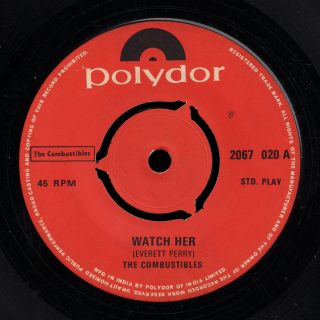 The Combustibles came from Bombay, India, and recorded “Watch Her” / “Some Peace of Mind” in 1970. Vocalist Everett Perry wrote both songs. “Watch Her” has vocals and rhythm that reminds me somewhat of the Velvet Underground. The songs saw release as Polydor 2067 020 in 1971.
The Combustibles came from Bombay, India, and recorded “Watch Her” / “Some Peace of Mind” in 1970. Vocalist Everett Perry wrote both songs. “Watch Her” has vocals and rhythm that reminds me somewhat of the Velvet Underground. The songs saw release as Polydor 2067 020 in 1971.
